Today’s buyers have more shopping and fulfillment options than ever before. They can shop for products via a mix of channels, including desktop, mobile device, telephone and brick and mortar store or warehouse, and then opt to fulfill via an array of delivery or pickup options. Throughout, they are expecting a fully integrated customer journey that feels seamless – a truly omnichannel experience that bridges the gaps between all touches, from shopping to buying to order fulfillment (and beyond).
An omnichannel experience means customers can purchase and receive what they want, when and how they want. But how do you eliminate friction along a loopy, non-linear and unpredictable buyer journey? When it comes to your digital commerce, the answers are intelligent search, fast recall, high personalization, relevant recommendations and flexible fulfillment/omnichannel – all backed by good data and analytics. It sounds daunting, but it’s all doable. Here’s how.
Good Data
To drive successful searches and ultimately, conversions your product data needs to be accurate, complete and appealing to your customers. Data enrichment can take care of all of this. Enriching your data means classifying your products into standard, well-understood groupings and finely tuning descriptions with key attributes. The goal is to improve findability and eliminate frustrating friction points like null searches or irrelevant results.
Having good data can also refer to the in-store inventory you’re showing to customers on your site. An individual store will only have a fraction of the items in your company’s entire catalog. If you want to provide popular omnichannel services, such as shop by store and buy online pickup in store (BOPIS), you need to ensure that your CRM has accurate real-time inventory data for each location.
Intelligent Search and Fast Recall
Removing friction from product discovery seems like a no-brainer because customers can’t buy it if they can’t find it. Predictive, intelligent search capabilities, including search as you type (SAYT) and smart synonyms will call up exactly what your customers want as quickly as possible to drive conversions.
Finely-Tuned Personalization and Relevant Recommendations
While 66% of customers expect companies to understand their unique needs, only 34% of them actually do treat customers as individuals. There’s a real disconnect here, as well as an opportunity. There are tools that use AI and machine learning to create personal experiences, such as relevant product recommendations, to make shopping easier and more enjoyable. These recommendations are generally based on individual browsing behavior and purchase history data, and they get better over time. The upshot is that you create loyal customers who feel you truly understand their needs and keep coming back to buy from you.
Flexible Omnichannel Fulfillment
By providing a rich variety of convenient omnichannel fulfillment choices for your customers, you remove points of friction at the end of their buying journey. These days, with the necessary social distancing protocols, options like buy online pickup in store, curbside pickup and multiple paid delivery choices can be better for customer health, while also reducing your fulfillment costs.
Flexible fulfillment involving brick and mortar stores can also give companies a big leg up over Amazon, which is digital only. As such, they aren’t able to offer shop by store, BOPIS or curbside pickup – all services that people seem to really love. In fact, 50% of customers prefer BOPIS because it's more convenient. Take that, Amazon.
Analytics for Continuous Improvement
Finally, the best way to remove friction from the buyer's journey is to know and understand it at all points along the way. Good analytics can help you with your rules and biasing to provide a smoother shopping experience. They can help you eliminate null searches, adjust low converting search terms and see which terms are leading customers to buy. They can also identify all bottlenecks and dead ends that are impeding conversions. Overall, good analytics can give you deep insight into how your buyer journey affects your revenue so that you can make better informed decisions and continuous improvements.
Summary
Customers expect their journey to flow seamlessly between your digital and physical channels without missing a beat, whether you’re selling B2B or B2C. So, it’s not surprising that 85% of B2B buyers and 79% of B2C buyers say the experience your company provides is just as important as your product or service. We can help you identify and remove the friction points that are affecting your customers and your bottom line. On average, we see a 120-250 basis point increase in conversion rates when the GroupBy Search Suite is implemented. Let’s book some time to discuss what GroupBy can do for you.


